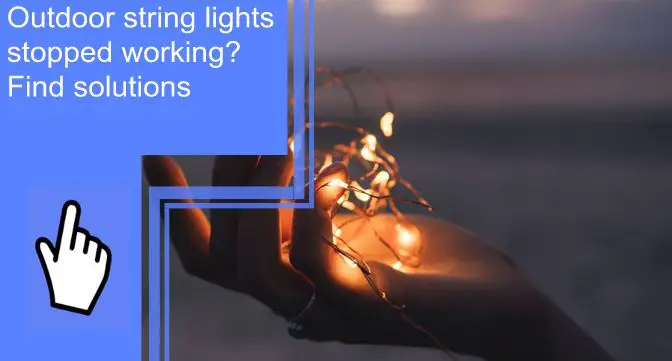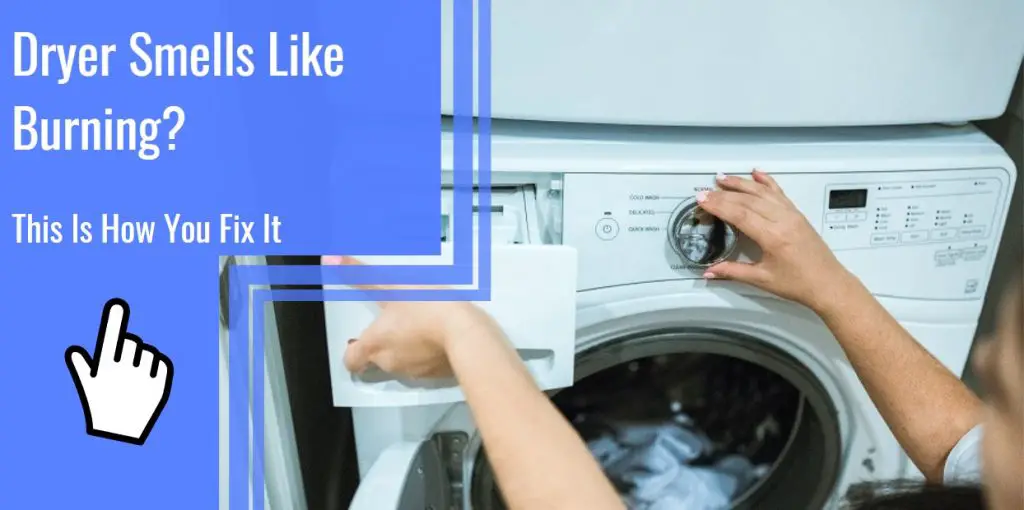What you find on this page:
Outdoor string lights are a great way to add lighting to your yard or patio, but it can be frustrating when they stop working. Luckily, there are a few things you can do to troubleshoot and fix the problem.
This article will show you how to fix common problems with outdoor string lights. We’ll also provide some tips on how to care for your lights to prevent future problems.
So whether your lights are not working at all, or they’re just not working as well as they used to, after reading this article, you should be able to get them up and running again.
Outdoor String Lights Not Working Completely: Reasons
So, your outdoor string lights stopped working altogether. Here are some reasons this might happen and what you can do about it.
1. Power Outage
A power outage is one of the most common reasons that your outdoor string lights stop working. If there is a power outage in your area, the lights will not be able to turn on.
2. Tripped GFCI
A GFCI, or Ground Fault Circuit Interrupter, is a device that helps protect people from electrical shocks. If this device trips, there is something wrong with the electrical wiring, and the circuit has been interrupted. This could be the cause of your outdoor string lights not working properly.

3. Tripped Breaker
A breaker is a device that helps protect an electrical circuit from becoming overloaded. If this device trips, it means that too much electricity is being used and the circuit has been interrupted. You may have noticed your string of outdoor lights stopped working because of this.
4. Damaged Wires
Outdoor string lights are often placed in areas with a lot of moisture, such as near ponds or gardens. Over time, this can cause the wires inside the light strands to corrode and become damaged. It can lead to the lights not working at all.
5. Burned-Out Bulbs
If one or more of the bulbs in your outdoor string lights are burned out, it will prevent the entire strand from working.
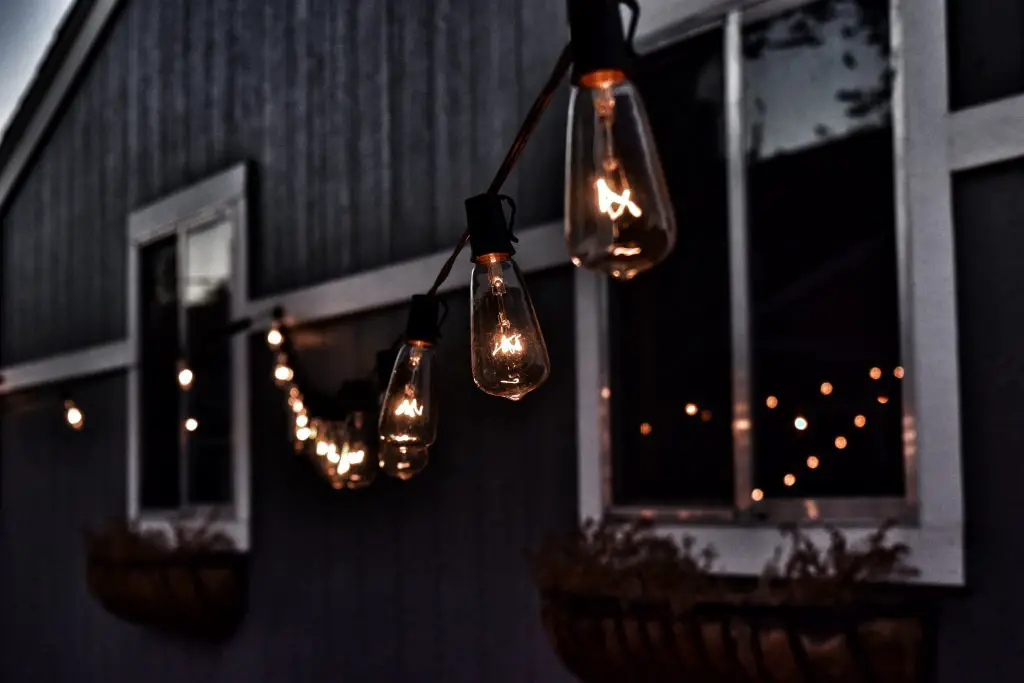
6. Unseated Bulb
An unseated bulb will prevent the entire strand of outdoor string lights from working.
7. Corroded Bulb
If one of the bulbs in your outdoor string lights is rusted, it will cause the rest of the strand to fail.
How to Troubleshoot and Repair String Lights That Stopped Working?
Now that you know some of the reasons why your outdoor string lights might have stopped working, here are some troubleshooting tips to help you repair them.

1. Diagnosing the Issue
The first step in troubleshooting and repairing your outdoor string lights is to determine what is causing the issue. You can check a few different things to help you diagnose the problem.
2. Inspect the Strand
If your outdoor LED string lights stop working, the first thing you should do is inspect the strand for any damage. Check for any frayed wires, loose connections, or broken bulbs. Also, ensure that the strand is not plugged into an outlet controlled by a switch.
If you find any damage to the strand, you will need to replace it. You can buy replacement string lights at most hardware stores.
3. Check the Power — GFCI & Breakers
If your outdoor string lights are plugged into an outlet, ensure the power is turned on. You need to check whether the circuit breaker has tripped or a fuse has blown. Also, check if the outlet is controlled by a ground fault circuit interrupter (GFCI). If so, reset the GFCI.
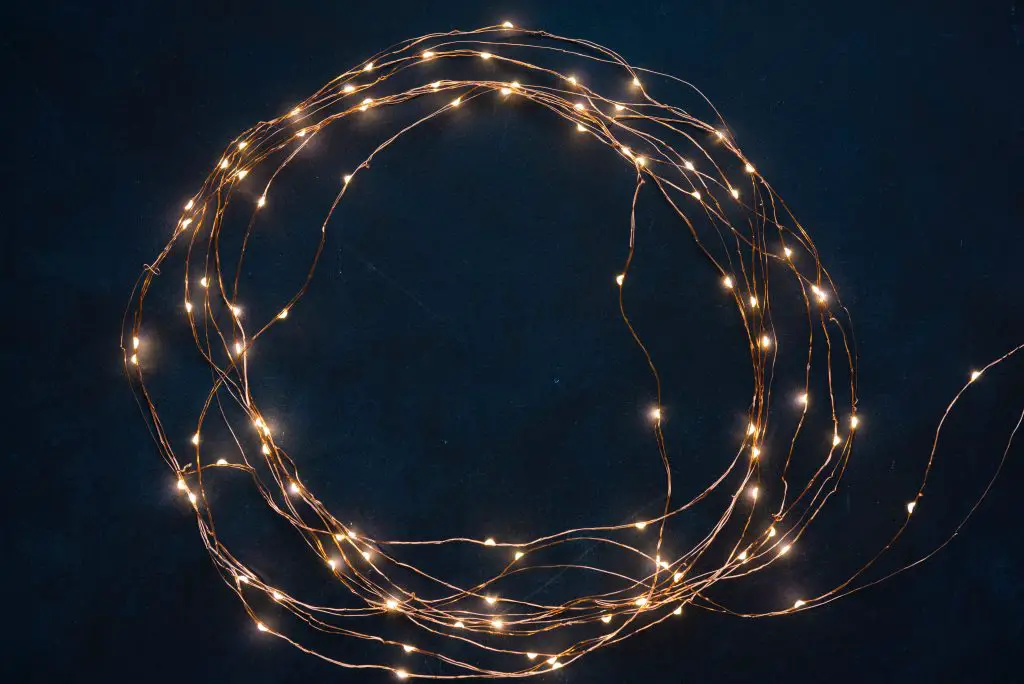
4. Look for Safety Issues
When troubleshooting your outdoor string lights, look for any safety issues. Check to see if the wires are frayed or if there are any exposed bulbs.
If you find any safety issues, fix them before using the lights again.
5. Look for Unseated or Corroded Bulbs
One of the most common reasons outdoor string lights stop working is the bulbs become loose or corroded. Over time, the vibration from the wind can cause the bulbs to become loose in their sockets. Additionally, moisture can cause the metal contacts on the bulbs to corrode.
6. Change the Fuses
If your string of lights has fuses, check them to see if they are burned out. Most string lights come with spare fuses, so keep a few on hand. To change the fuse, remove the old one and insert a new one.

7. Check for Damaged Shunts
String lights usually have a shunt, a small wire that bypasses the burned-out bulb. If this shunt is damaged, it can cause the entire string of lights to stop working. Remove all bulbs from the strand to check for a damaged shunt and look for a broken wire.
If you find a damaged shunt, you will need to replace it. You can buy replacement shunts at most hardware stores.
8. Replace Burned-Out Bulbs on String Lights
If one or more of the bulbs on your string of lights has burned out, simply replace them with new ones. Be sure to buy the same bulb type so that the new one will match the others in light output and color.
9. Half of the String Lights Not Working
If only half of your string lights are working, the issue is most likely with the socket. To fix this problem, unscrew the socket and twist it around so that the bulbs are in a different position. This will often fix the problem.
If the problem persists, you may need to replace the socket. You can buy replacement sockets at most hardware stores.
When All of the Lights Won’t Turn On?
There are a few different things that could be causing this problem. First, check to see if the power is turned on. Next, check the circuit breaker to see if it has tripped. You may need to reset it if so.
If the problem persists, check the outlet to see if it is controlled by a GFCI and reset it if necessary.
If the lights still don’t work after checking these things, the issue is most likely with the plug. The prongs on the plug may be bent, so check them. You can try to straighten them with a pair of pliers if they are bent.

When the Bulbs Keep Blowing?
If you’re finding that the bulbs on your outdoor string lights keep blowing, a few things could be causing this.
1. Wrong Type of Bulb
Make sure that you’re using the correct type of bulb. Different string lights require different types of bulbs, so be sure to check the manufacturer’s specifications.
2. Loose Bulbs
Also, ensure that the bulbs are screwed in tightly. Loose bulbs can cause the entire string of lights to stop working.
3. Corroded Sockets
Finally, check the socket to see if it is corroded. You will need to replace it if this is the case.
Why Are the String Lights Flickering?
There are a few reasons why your string lights may be flickering. Some of the most common reasons include:
- Loose bulbs
- Damaged sockets
- Loose wiring
- Faulty fuses
- Dirty or corroded contacts
To fix a flickering string of lights, tighten the bulbs, replace the socket, or clean the contacts.
How To Fix String Lights?
Depending on the problem, there are a few different ways to fix string lights.
1. Bulbs
Usually, the issue is with the bulbs. The easiest way to fix this problem is to simply replace the bulbs. To replace a burned-out bulb, unscrew the old one and screw in the new one.
2. Fuses
Fuse blowing is usually the result of too much current flowing through the circuit. You can try replacing the fuse with one of a higher amperage rating, but this may not be a permanent solution. If the fuse continues to blow, you may need to rewire the string light.
3. Sockets
If a socket is burned out, you can replace it with a new socket. Just make sure that the new socket is compatible with the type of bulb that is being used.
4. Wiring
If there is damage to the wiring, you may need to replace the entire string light. Be careful when doing this, as it can be dangerous if done incorrectly.
5. Contacts
If the contacts are dirty or corroded, they can cause problems with the electrical current running through the string light. You can clean them using a contact cleaner or sandpaper. If they are severely corroded, you may need to replace them entirely.
Only use contact cleaner meant for electrical purposes, and avoid getting it on your skin as it can be harmful.
7. Shunts
If too much current runs through a string light, you may need to add a shunt to prevent damage to the light or fuse.
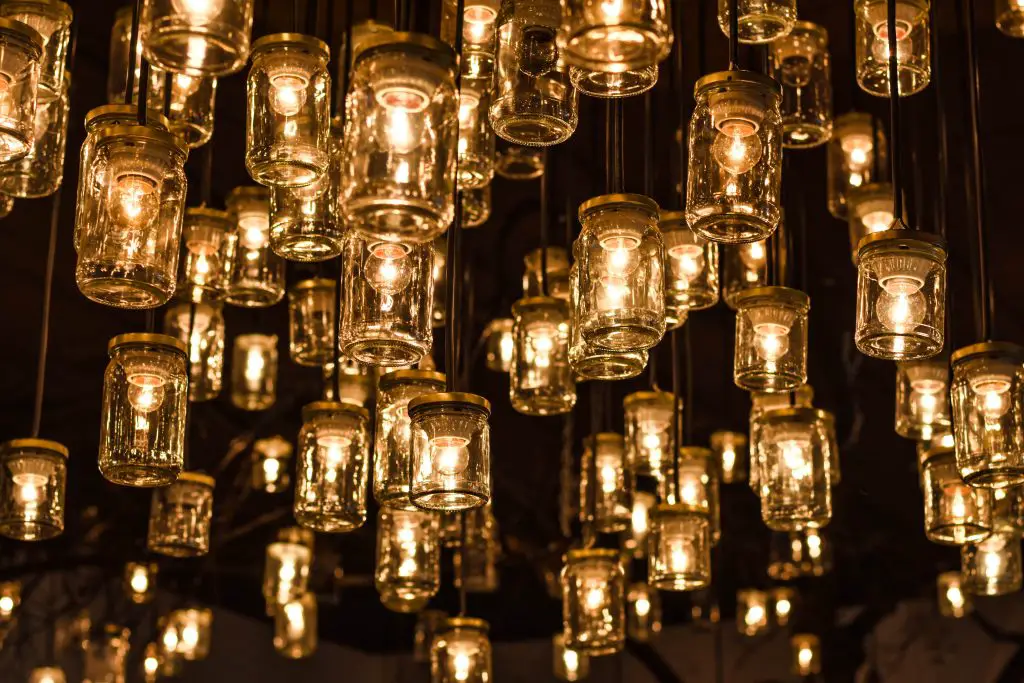
Outdoor String Lights Care and Maintenance
To ensure that your outdoor string lights last for many years to come, be sure to follow these simple tips:
Store the lights in a cool, dry place when they’re not in use – Moisture can damage the wires and sockets, so be sure to store them in a dry place.
Inspect the lights before each use – Before using your outdoor string lights, inspect them for any damage. If you find any damaged parts, replace them before using the lights.
Use caution when handling the lights – Be careful when handling the lights to avoid damaging them. Also, keep them away from children and pets.
Follow the manufacturer’s instructions – Every type of outdoor string light is different, so follow the manufacturer’s instructions for use and care.
Always consult an electrician – If you’re unsure how to fix a problem with your outdoor string lights, consult an electrician. They will be able to repair or replace any damaged parts safely.
Avoid flammable materials – Keep the lights away from flammable materials, as they could catch fire if they come into contact with them.
Provide cover for wet locations – If you’re using the lights in a wet location, be sure to provide some sort of cover to protect them from the elements.
Turn the lights off when not in use – When you’re finished using the lights, be sure to turn them off. This will help save energy and prolong the life of the lights.
Conclusion
Outdoor string lights are a great way to add light and ambiance to any outdoor space. But, like any type of light, they can stop working for various reasons.
Check the bulbs, contacts, fuses, and wires if your outdoor string lights have stopped working. You may also want to consult an electrician if you’re unsure how to fix the problem.
Hopefully, this article has helped you stop wondering, “why have my outdoor string lights stopped working?”
By following these tips, you can get your outdoor string lights working again in no time.
Frequently Asked Questions
A whole string of lights can burn out when one of the bulbs is burned out. This is because the extra wattage from the burned-out bulb will overload the rest of the bulbs on the string, causing them to burn out.
The best way to tell which bulb is out on a string of lights is to plug the lights in and turn them on. Then, look at the bulbs to see which one is not lit up. Sometimes, a burned-out bulb will appear darker than the other bulbs.
Some of the reasons why LED lights may suddenly stop working include:
1. A loose connection
2. A blown fuse
3. An incorrect power source
4. Damaged wires
To check a fuse for a string of lights, you will need to remove the fuse from the socket and test it with a multimeter. To so:
1. Turn off the power to the string of lights. Then, remove the fuse from the socket.
2. Set the multimeter to the “ohms” setting and touch the leads to the fuse.
3. If the multimeter reads “0,” the fuse is good. However, if the multimeter reads the same value as when held apart, the fuse is blown and needs to be replaced.
The issue is most likely with the socket. To fix this problem, unscrew the socket and twist it around so that the bulbs are in a different position, or replace the socket.

